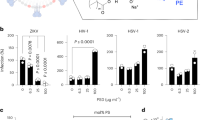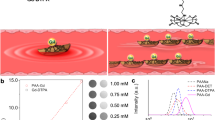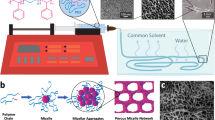Abstract
THE Portuguese man-of-war (Physalia) occurs in two forms which are mirror images of one another but otherwise identical. Under the influence of the wind, one form (left-handed) moves to the right of the downward direction, the other (right-handed) to the left.
This is a preview of subscription content, access via your institution
Access options
Subscribe to this journal
Receive 51 print issues and online access
$199.00 per year
only $3.90 per issue
Buy this article
- Purchase on SpringerLink
- Instant access to full article PDF
Prices may be subject to local taxes which are calculated during checkout
Similar content being viewed by others
References
Woodcock, A. H., J. Mar. Res., 5, 196 (1944).
Fontaine, A., Notes Nat. Hist. Soc. Jamaica, 64, 61 (1954).
Author information
Authors and Affiliations
Rights and permissions
About this article
Cite this article
TOTTON, A., MACKIE, G. Dimorphism in the Portuguese Man-of-War. Nature 177, 290 (1956). https://doi.org/10.1038/177290b0
Issue date:
DOI: https://doi.org/10.1038/177290b0
This article is cited by
-
Morphology and development of the Portuguese man of war, Physalia physalis
Scientific Reports (2019)
-
Dimorphism and Size Distribution in Velella and Physalia
Nature (1959)
-
Dimorphism in the Portuguese Man-of-War
Nature (1956)



